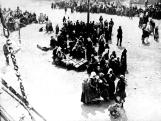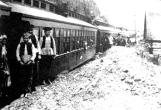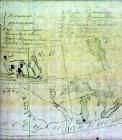14
After a long voyage that started on December 21st, 1898, the first contingent of 2,134 Doukhobors arrived in Halifax, Canada, which then proceeded to St. John, New Brunswick on January 24th 1899. Ten Doukhobors died en route, but with spirits high and hopeful, they were greeted by Quakers, newspaper reporters, James Smart, the deputy minister of the interior and other distinguished onlookers. All were duly impressed with the health of the Doukhobors, their behaviour, their singing, and the cleanliness of their ship (which they had fastidiously maintained and cleaned during the month-plus voyage).The S.S. Lake Huron then sailed to St. John where this group would take five trains to western Canada. (Some passengers of the S.S. Lake Huron were to remain in quarantine in Halifax).
16
By the end of June, three more shiploads arrived - one, the S.S. Lake Superior landed a few days later on January 27th, but these immigrants were held in quarantine in Grosse Isle until February 27th. Then one more shipload on May 9th (again, the S.S. Lake Superior), and one on June 5th, (the Lake Huron), arrived in Quebec City (13 cases of smallpox were recorded and the contingent was quarantined on Grosse Isle for nearly a month).This was the largest contingent of 2,318 Doukhobors, making for a total of over 7,400 - the largest number of immigrants ever to arrive at one time. These ships were privately chartered from the proceeds garnered by the Tolstoyans and donations from the Quakers.
18
The first contingent arrived about 4 days later in Winnipeg by train. The first few weeks were spent in various immigration halls and the Doukhobors immediately began hiring themselves out. Women took in wash - men worked on everything from shoveling snow to cutting firewood.This simple act incited anger from the Canadian working class who would not work for the Doukhobors' meager wages. But the Doukhobors were hard working - and desperate as well. And it would not be the first time in Canada when jobs would be taken away by the Doukhobors who were willing to work for less than the going rate of wage.


